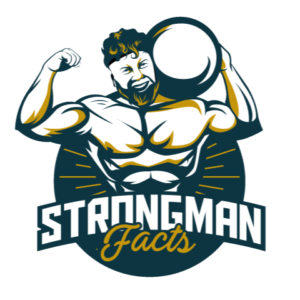Why Do Tall Strongmen Excel?
In the world of strength sports, particularly in strongman competitions, athletes who tower above the rest often have a distinct advantage. But what exactly makes tall strongmen so successful in these grueling feats of strength? From mechanical leverage to the psychological impact of their imposing stature, multiple factors converge to give taller athletes an edge in competitions designed to test the very limits of human power, endurance, and resilience.
The Physics of Strength: Leverage and Load
One fundamental aspect that contributes to the success of tall strongmen is the principle of leverage. In physics, leverage refers to the use of a lever to multiply force. For tall strongmen, longer limbs act as longer levers, particularly advantageous in events like the atlas stones, deadlifts, and log press.
Mechanical Leverage
In events such as the deadlift, the initial movement of lifting the weight from the ground can be more mechanically favorable for taller athletes. Their longer arms can mean a reduced need to bend as deeply to grip the bar, potentially allowing for a more powerful initial lift. Similarly, in the log press, longer arms can aid in the “clean” phase of the lift, from lap to chest, although they may face challenges in the “press” phase due to the greater distance the weight must travel.
Load Distribution
Tall strongmen also benefit from a broader frame, which allows for greater muscle mass distribution. More muscle mass can translate into more power generation, crucial in virtually every strongman event. This larger mass helps not just in moving objects but in stabilizing the body under immense loads, such as carrying heavy yokes or farmer’s walk implements.
Metabolic and Endurance Factors
While the bulk and mass of taller competitors might suggest a disadvantage in endurance, many strongman events require short bursts of intense activity rather than prolonged exertion. In these scenarios, the increased muscle mass and power of larger athletes can be a significant advantage, allowing them to complete tasks more quickly and efficiently.
Energy Efficiency
Taller athletes often have larger muscle groups, which can store more glycogen (energy reserves). During short, intense bursts of activity, these reserves are crucial for performance, providing the energy needed to execute high-power moves without the immediate need for oxygen.
Psychological Intimidation and Presence
The psychological aspect of sports competition cannot be underestimated, and in this arena, taller strongmen often command an imposing presence. The mere sight of a physically imposing competitor can be intimidating to opponents, potentially affecting their performance.
Stage Presence
In strongman competitions, confidence and presence are part of the game. Taller athletes often appear more dominant, which can influence both audience perception and their own self-confidence. This psychological boost can enhance performance, as confidence is closely linked to the ability to focus and execute under pressure.
Adaptations to Training and Technique
Tall strongmen often tailor their training to leverage their physical advantages. This includes focusing on increasing absolute strength and improving techniques that complement their body mechanics.
Understanding the biomechanics of their larger frames allows these athletes to customize their training. For instance, they might focus more on squats and deadlifts to build core and lower body strength, which is essential for transferring force during many strongman events.
Tall strongmen may adjust lifting techniques to maximize their performance. For example, altering grip width in deadlifts or adjusting stance in squats can help optimize their mechanical advantages. These small tweaks in technique, tailored to their unique body dimensions, can lead to significant improvements in performance.
Challenges and Considerations
Despite the advantages, being a tall strongman also comes with challenges. The greater range of motion required for lifts can lead to increased risk of injury. Moreover, the cardiovascular demands on larger bodies are higher, and maintaining joint health under the stress of heavy loads is critical.
Injury Prevention
Preventative measures such as focused strength training for tendons and ligaments, regular mobility work, and careful monitoring of cardiovascular health are essential parts of training for tall strongmen. These preventative strategies are crucial for long-term sustainability in the sport.
Diet and Nutrition
Maintaining a large body mass requires meticulous attention to diet and nutrition. Taller athletes need significantly more calories to support their muscle mass and energy expenditure, especially during intense training periods.
Final Thoughts
The success of tall strongmen in strength sports is no mere coincidence. Their physical stature offers mechanical and metabolic advantages that, when properly harnessed, translate into formidable power and endurance. However, it is their ability to adapt training, technique, and strategy to their unique physical attributes that truly sets them apart.
While challenges exist, with careful management and strategic training, tall strongmen can not only compete but excel, leveraging their natural advantages to dominate the world of strength sports. Their towering presence is not just a physical attribute but a multifaceted advantage that impacts every aspect of their performance, from the mechanical to the psychological. As strongman competitions continue to evolve, the role of physical stature in shaping champions will undoubtedly remain a topic of interest and admiration.



